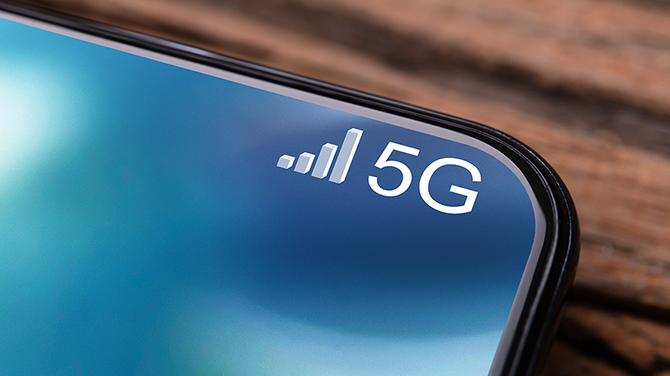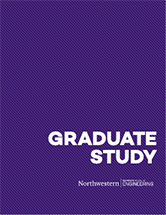5G and its Impact on Mobile Users
Professor Mike Honig explains the significance of 5G and why Master of Science in Information Technology (MSIT) students should understand its implications.

The Super Bowl is a guaranteed way to get your message before millions of people. Thirty-second commercials for the 2021 game cost more than $5 million, and there was a consistent message from the mobile carriers that advertised during the contest: 5G is here.
But what exactly is 5G? What's its significance? How will it impact average mobile users as well as IT professionals?
Professor Mike Honig, who teaches in Northwestern Engineering's Master of Science in Information Technology (MSIT) program, shared what the common user as well as IT specialists should know about 5G.
How do you describe 5G?
5G refers to the fifth generation of mobile cellular standards. The first generation (1G) was introduced in the mid to late 1980's, the second generation (2G) was introduced in the early 1990's, and 3G came out around 2000. The fourth generation (4G), also called LTE (Long Term Evolution) launched around 2010, and now 5G is being deployed by US carriers. Each new generation has introduced important technical innovations that boosted network capacity in terms of data rates per user and the amount of total traffic that can be supported.
What is the significance of a 5G network?
5G can potentially offer significantly higher data rates than 4G systems, along with low-latency communications. One of the main drivers for 5G has been Internet of Things (IoT) and machine-to-machine communications. This encompasses a wide range of application scenarios, such as remote sensing devices that transmit data from remote locations to a database, the cloud, or another monitoring location, as well as video monitoring and remote control of machinery and other devices.
From a technical perspective, the main innovations introduced in the 5G standard are the move to much higher frequencies, namely millimeter wave bands above 28 GHz — 4G systems currently operate below 4 GHz — and the introduction of a high-reliability and low latency service mode (called URLLC, which stands for Ultra-Reliable Low Latency Communications).
The move to higher frequencies is motivated by current spectrum allocations overseen by the Federal Communications Commission (FCC) and other government agencies, which have assigned much of the spectrum above current cellular bands to non-commercial applications.
What were the challenges in developing 5G?
The move to millimeter wave bands poses major challenges due to the change in propagation characteristics from lower bands. In general, the higher the frequency, the more the signal is attenuated versus distance, and the higher the likelihood that the signal is absorbed or blocked by intervening objects between the transmitter and receiver. The approach used to address this is to use many antennas at both the transmitter and receiver to create narrow spatial beams that focus the energy towards the desired receiver. This, however, introduces further challenges in locating and tracking the desired receiver.
The URLLC mode also necessitates a redesign of the way transmitters access and share the network resources to ensure very low latency incurred end-to-end, from the transmitter to the receiver.
Another trend in 5G is to build out smaller cells than those in 4G. The smaller the cell, the more bandwidth is available to each user, but at the cost of additional infrastructure.
Yet another set of challenges comes from the policy side: 5G services need much more spectrum, and that has motivated the FCC to consider new initiatives for transitioning the spectrum to 5G. That is often a long and complicated process since incumbent users of the spectrum, such as broadcast television providers and some government agencies, must either be moved to other locations to make way for 5G, or methods must be devised that allow 5G providers to share spectrum with incumbent users.
From a user perspective, what is different about 5G compared with past networks?
A typical cellular user should see faster responses to data applications in areas where 5G rollouts have introduced smaller cells and millimeter wave access. My understanding is that 5G service exists in most urban areas and that carriers are continuing to expand 5G coverage. According to Verizon's web page they have deployed 5G in more than 60 cities. New applications such as IoT and machine-to-machine communications may be more important for industrial types of applications than for typical daily use.
In general, 5G should enable improved coverage and higher rates relative to LTE, although I suspect that for most people using typical applications, the improvement will not be very noticeable. This is especially true if they mostly connect with WiFi networks, which are not part of the 5G standard.
What conversations are being had about 6G?
The research community, including industry and academia, has started to think about future applications, perhaps along the lines of immersive virtual reality, that would require capabilities beyond those of current 5G systems. It is not clear yet what 6G might entail, although access to more of the spectrum will likely be important. There are also new WiFi standards being developed with similar types of objectives for higher rates and low latencies.
Why is 5G relevant to MSIT students?
Wireless networking clearly plays a major role in information technology — there is well over $150 billion per year in revenues for the cellular providers. 5G will also offer added support to new applications like Internet of Things technology that has the potential to create all kinds of new opportunities for businesses. It is important to understand the advances in technology that have led to 5G, and that define 5G capabilities, along with limitations and challenges for future wireless systems and services.

